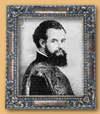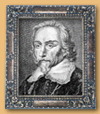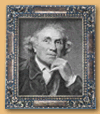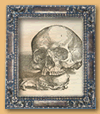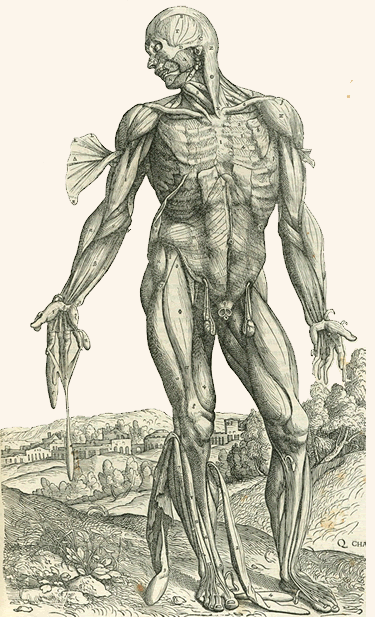
Plate from Vesalius's De fabrica.
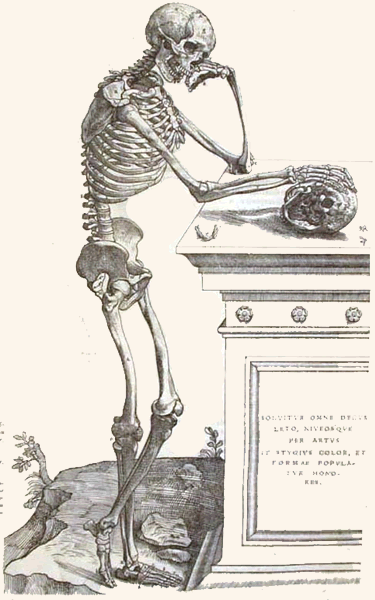

Prior to a papal bull issued by Pope Sixtus IV in 1482, anatomists could not practice on human cadavers. Because of the prohibition, anatomists dissected other mammals, and seeing analogous structures between them, inferred that man possessed similar organs inside the human corpus.1 Such a belief can be traced to Galen, specifically his theories on physiology which asserted that humans were anatomically identical to other mammals.2 According to the papal bull, the only suitable cadavers were those of executed criminals whose remains must be given a proper Christian burial. Despite the lifting of the ban, anatomists in England and Germany did not commonly practice on human cadavers until the 1550s.3 In England, KIng Henry VIII did not license the Barber Surgeons to anatomize felons until 1540, and they were limited to four per annum. The College of Physicians was only granted permission to perform dissections in 1565 by Queen Elizabeth.4 While many commentators on the Enlightenment designate Isaac Newton’s Philosophiæ Naturalis Principia Mathematica (“Mathematical Principles of Natural Philosophy”) as the corner stone of empirical, observation-based natural philosophy, at least some credit should be given to the influence of 16th century anatomists who criticized Galen’s anatomical suppositions and exhaustively studied human body. Thus, one might argue that Enlightenment anatomy truly began in the 16th century through the work of Andreas Vesalius, a Belgian-born anatomist trained at Padua (where he would later train the next generation). Vesalius represents the spirit of Enlightenment critique in that he believed an anatomist must have first-hand knowledge of the human body, a break from over a millenium of anatomical practice. Anatomists during the Age of Enlightenment continued to operate under Vesalius's imperative to see for one's self.5 Vesalius and his acolytes remained the zenith of anatomical practice until 17th century English physician and anatomist William Harvey (1578–1657) discovered the process of circulation of the blood. By joining modern anatomy with physics, Harvey is responsible for a major revolution in physiology (Vesalius and the Vesalians still fell back upon Galenic physiology even as they critiqued his anatomy). Harveian anatomy led to the development of iatrophysics and iatrochemisty, two disciplines that foregrounded materialist natural philosophy. The Harveian's work, ostensibly about the mapping of the body's interior space, was also charged with the attempt to answer a related question debated by the philosophes: Is the living body simply a machine or is something (mystical or spiritual) superadded to the body? This question would dominate the 17th century, not only among the anatomists but among the philosophes as well. Developments such as Harvey's in physiology influenced the 18th century Scottish brothers William and John Hunter.6 William Hunter established his own school of anatomy (where John trained), while John developed what became known as the anatomical series, returning to the occasional dissection of non-human mammals to illustrate not Galenic identicality but evolutionary progress.7 To understand anatomical practice in the 17th century, one must subscribe to the notion of a long Enlightenment. Just as Newton would champion first-hand experience when developing natural philosophy, Vesalius applied the same methods to the study of anatomy over a century before. In fact, while the 17th century saw a number of anatomists make small discoveries, the major breakthroughs occurred in the late 16th and early 17th centuries with Vesalius and Harvey. Seventeenth-century anatomists built upon their work, clearing the ground for Hunter in the late 17th century. |
![]()
